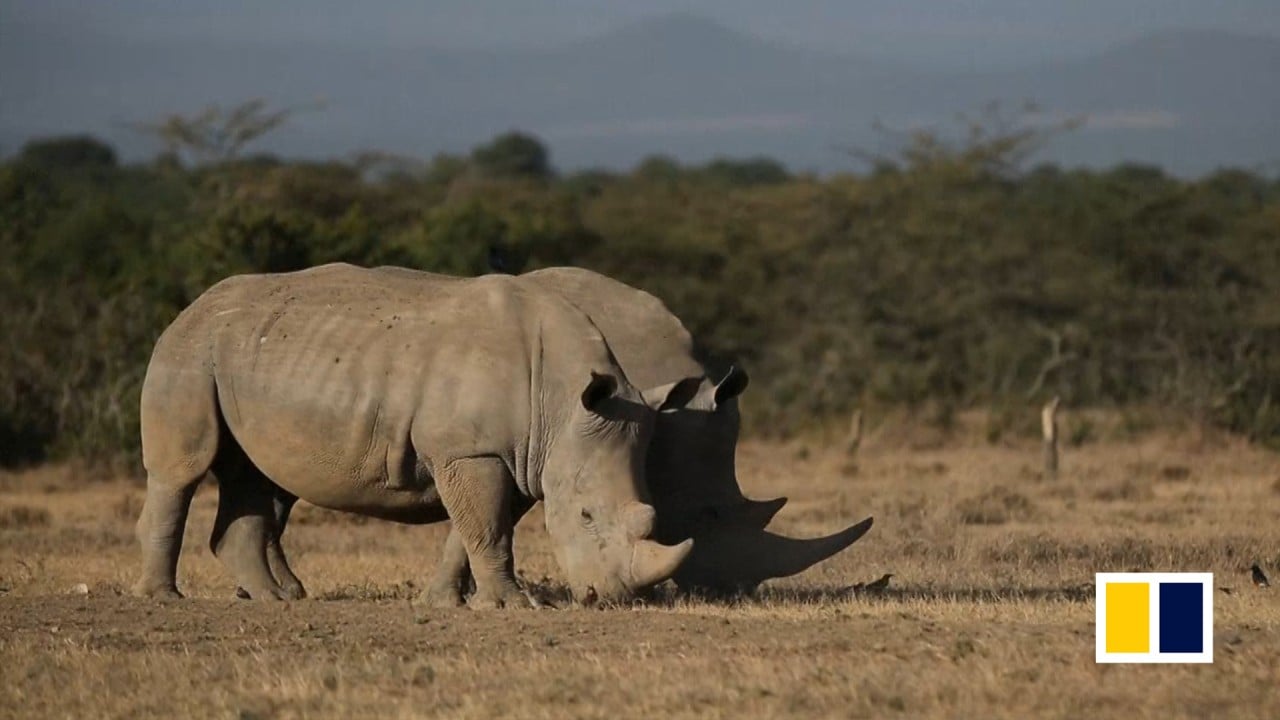
Meet the new wild species of pure Chinese giant salamander raising hopes for the future of the ‘living fossil’
- Researchers discovered the group of genetically uncontaminated amphibians in a pristine corner of eastern China
- The find means that others of the critically endangered population could be out there
The new species, Andrias jiangxiensis, was found during an 18-month study in a largely undisturbed part of the Jiulingshan National Nature Reserve in Jiangxi province off limits to the public.
The animals are the only known genetically pure, reproducing giant salamander population in its natural habitat in the country, according to the scientists from the Kunming Institute of Zoology under the Chinese Academy of Sciences.
“The discovery of the new species in a closed nature reserve provides hope that other genetically pure species may still exist in other such places,” said Robert Murphy, a professor at the University of Toronto and one of the co-authors of the study.
The study was published in the domestic peer-reviewed journal Zoological Research on May 18.
Japanese giant salamander at risk of disappearing as a distinct species
The Chinese giant salamander is one of the world’s biggest amphibians, growing up to 1.8 metres (6 feet) – and is believed to have remained almost unchanged since emerging in the Jurassic period about 170 million years ago.
While Chinese giant salamanders used to be thought of as one species, recent studies have revealed that there are five to eight genetically distinct evolutionary species in the country.
However, the species are under great threat of extinction due to habitat loss, water pollution and overexploitation of wild populations over the past decades.
The salamanders once ranged across much of southern and central China, but today the populations are highly fragmented, with fewer than 50,000 believed to be left in the wild.
The amphibian is protected in China, where dozens of nature reserves have been established to protect it and its habitats since the 1980s, according to the Ministry of Ecology and Environment.
There have also been attempts to breed Chinese giant salamanders in captivity and release them back into the wild, but this had some damaging effects.
Murphy said that in the 1990s, China hybridised several distinct species of salamanders and released hundreds of thousands of larval salamanders without testing for genetic compatibility or diseases.
“This well-intended effort has been a disaster,” he said.
The repopulation efforts resulted in “genetic pollution” of indigenous species. And, many wild populations collapsed when too many were collected to stock commercial salamander farms.
“Genetic purity is essential to assure that released individuals are genetically adapted to their local environment, and that hybrid offspring will not suffer from morphological deformities caused by genetic incompatibilities,” he said.
“Once maladaptive genes get into a population, they are exceedingly difficult to eliminate.”
Chinese cooking star’s braised giant salamander raises temperatures online
Murphy said conservation efforts had improved since then.
“After the discovery of multiple species of Chinese giant salamanders, China quickly put into place several actions, such as providing additional funding for critical research, establishing a series of nature reserves for the species, and promoting the cooperation between scientists, wildlife managers and politicians,” he said.
The researchers are now trying to track down more giant salamanders uncontaminated by hybridisation, and determine the distribution and status of each species.
Murphy said the discovery opened up new possibilities, such as establishing breeding farms with genetically pure salamanders to help populate ecosystems.
“It also establishes that release efforts should stop immediately until individuals can be tested genetically for their purity,” he said.
In their paper, the researchers also stressed the importance of undisturbed habitats for protecting wildlife.
“[Closed nature reserves set] a new pathway for discovering and conserving endangered species,” they said.


